WASHINGTON — The Supreme Court made history while it set up new challenges Wednesday with two victories for marriage equality.
In a pair of high-profile decisions, the divided court effectively undercut California’s Proposition 8, which bans same-sex marriage. Separately, the court struck down a key part of the federal Defense of Marriage Act, which denies same-sex married couples federal benefits. Together, the rulings provide an emphatic, if incomplete, win for advocates of same-sex marriage.
The decisions address different issues, and neither declares a broad constitutional right to same-sex marriage that covers residents of all 50 states. But in each case, acting on the final day of the term that began last October, a 5-4 court majority endorsed a position that helps the same-sex marriage cause, as well as individual couples.
“We’re proud of you guys,” President Obama said in a broadcast telephone call from Air Force One to the two same-sex couples who had contested Proposition 8, “and we’re proud to have this in California.”
The Proposition 8 case involved a challenge to the 2008 California ballot measure that banned same-sex marriage. On Wednesday, the court concluded that the supporters of the California ban lacked the legal standing to defend the measure. For same-sex couples in California, the real-world result could be they’re able to secure marriage licenses within about 25 days, once an appellate court takes a necessary procedural step.
“As soon as they lift the stay, marriages are on. And wedding bells will ring,” California Attorney General Kamala Harris said at a news conference Wednesday morning.
Vikram Amar, a law professor at the University of California, Davis, said, “The only fly in the ointment, possibly, is a county clerk from some conservative county” who may assert that he or she isn’t required to issue a same-sex marriage license. Separately, conservative supporters of Proposition 8 have suggested that the trial judge’s decision striking down the measure applies only to the two couples who filed the lawsuit.
In its ruling, the Supreme Court didn’t clarify the next steps, beyond concluding that Proposition 8 supporters lacked standing to defend the measure.
Standing is the legal term for being eligible to file a lawsuit. To have standing, an individual must have a significant interest in the controversy and must either have suffered an injury or face an imminent threat of injury.
“It is not enough that the party invoking the power of the court have a keen interest in the issue,” Chief Justice John Roberts Jr. wrote, adding that “we have no authority to decide this case on the merits.”
The decision eliminates a 9th U.S. Circuit Court of Appeals ruling and leaves intact a trial judge’s order blocking Proposition 8 from taking effect. Typically, it takes about 25 days for a Supreme Court ruling to filter down to the lower courts, though advocates hope it will happen sooner.
“We’re elated,” Berkeley, Calif., resident Kris Perry — one of the individuals who challenged Proposition 8 — said at a news conference. “Now our children will finally be in a family where their parents are married.”
The four dissenting justices — one liberal and three conservatives — argued that the Proposition 8 opponents should be heard in court. Intriguingly, Justice Anthony Kennedy, who wrote the separate decision striking down part of the Defense of Marriage Act, was among them.
The Defense of Marriage Act case involved a challenge to the 1996 federal law that prohibits same-sex couples who’d been married under state laws from obtaining myriad federal benefits. A different majority from the one that ruled in the Proposition 8 case concluded that portions of the federal law violated the Constitution, as they undermine those states that have chosen to allow same-sex marriage.
“DOMA divests married same-sex couples of the duties and responsibilities that are an essential part of married life,” Kennedy wrote. “It tells those couples, and all the world, that their otherwise valid marriages are unworthy of federal recognition. This places same-sex couples in an unstable position of being in a second-tier marriage.”
Kennedy joined the court’s four liberal justices in the decision. The court’s four conservatives dissented.
“The Constitution does not forbid the government to enforce traditional moral and sexual norms,” Justice Antonin Scalia wrote in dissent.
Scalia further warned that the lack of a uniform definition of marriage would cause many complications; for instance, for same-sex couples who must figure out their tax filing status when they move from one state to another. In the wake of the ruling, Sen. Dianne Feinstein of California and other Democrats said they would offer legislation to eliminate the Defense of Marriage Act altogether.
Section 3 of the Defense of Marriage Act declares that, for the purposes of providing federal benefits, marriage is “only a legal union between one man and one woman as husband and wife” and a spouse is only a “person of the opposite sex who is a husband or a wife.”
The definition is important because it determines eligibility for a host of federal rights, benefits and privileges.
Send questions/comments to the editors.

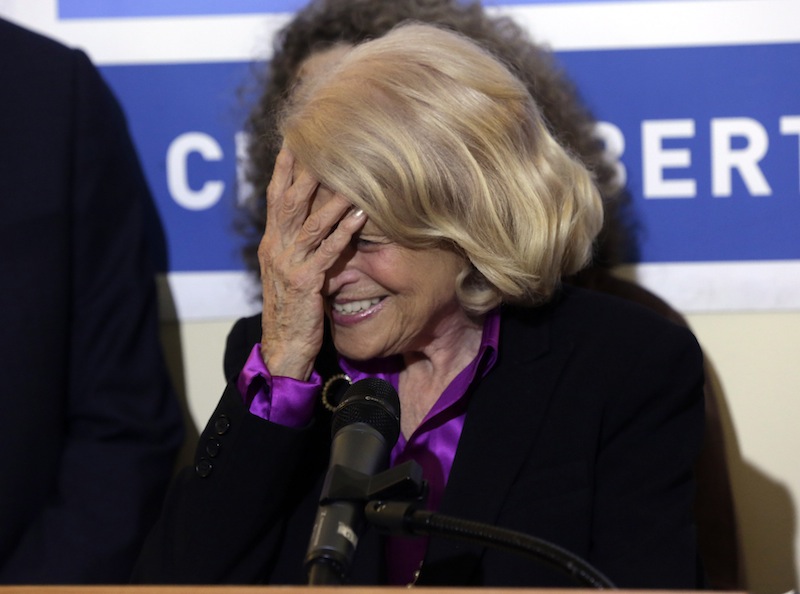
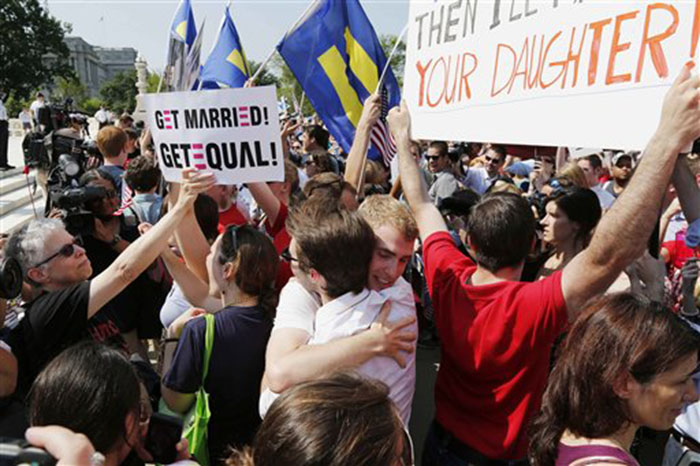
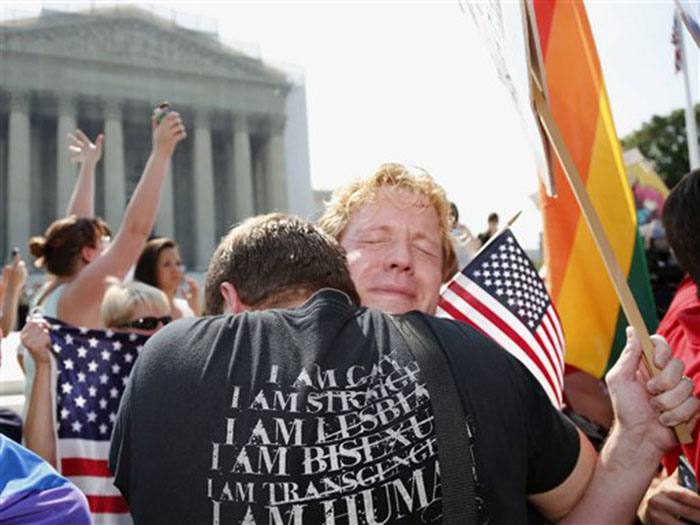
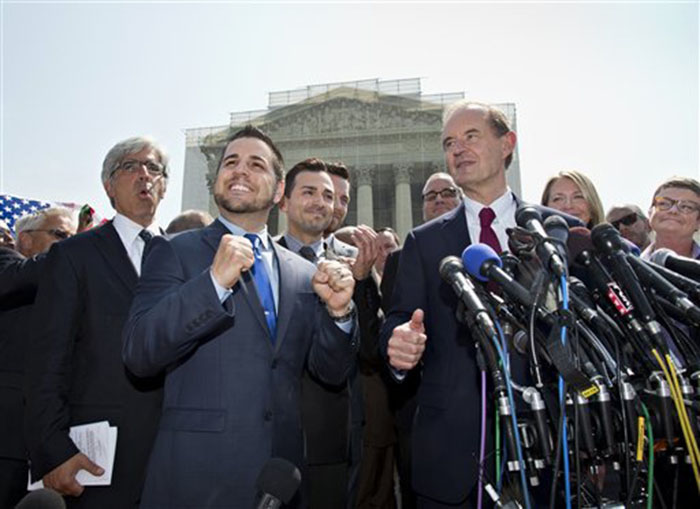
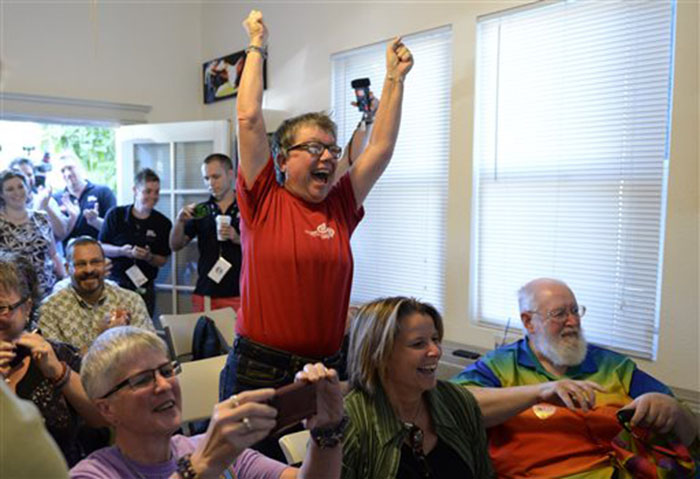
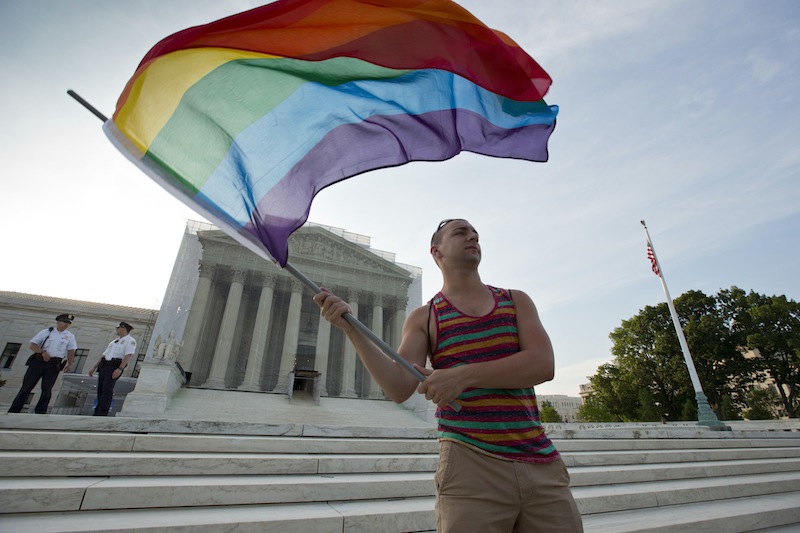
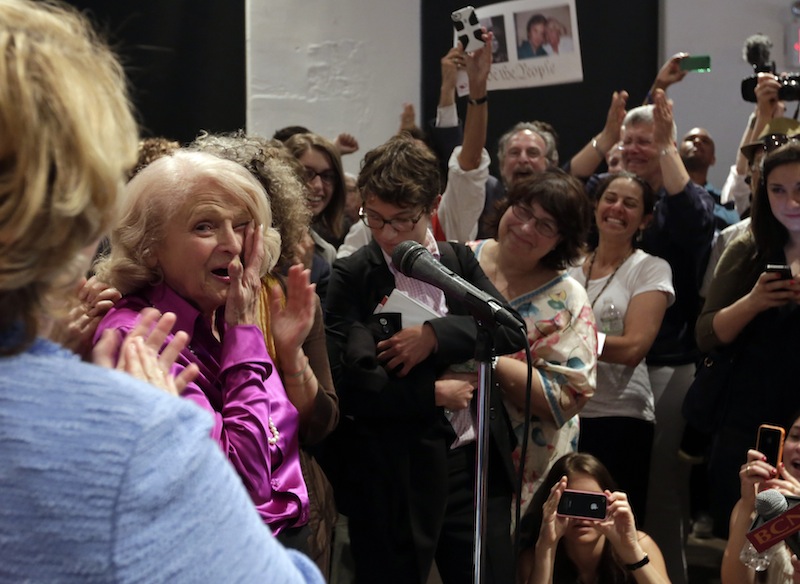

Comments are no longer available on this story